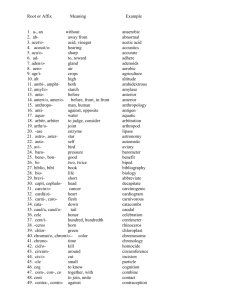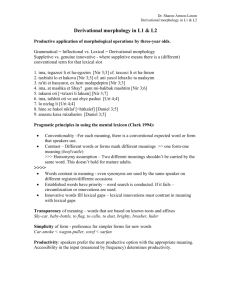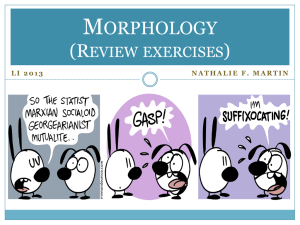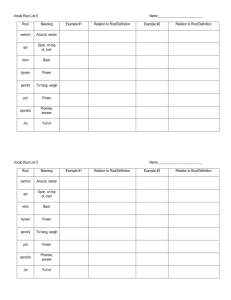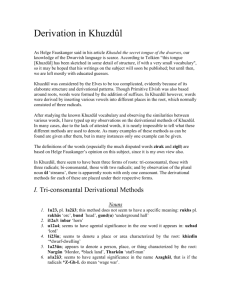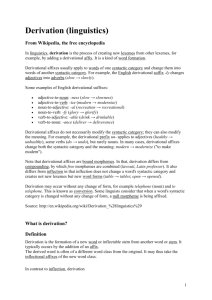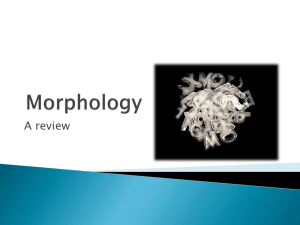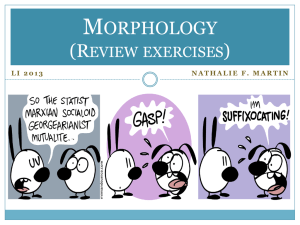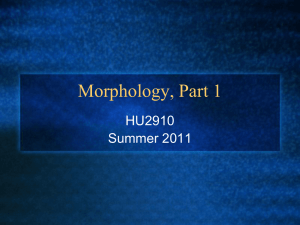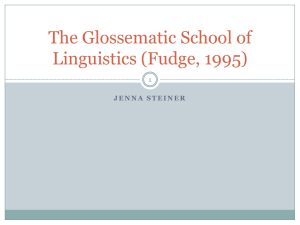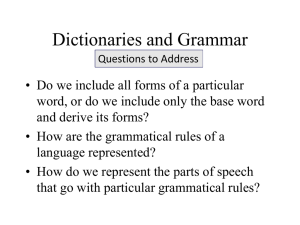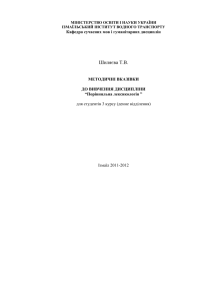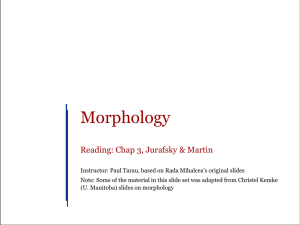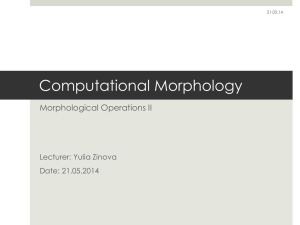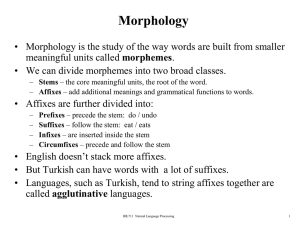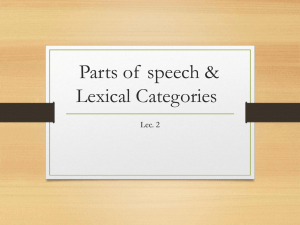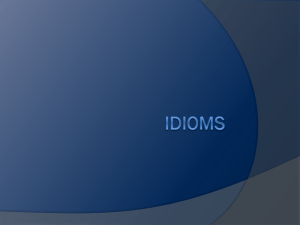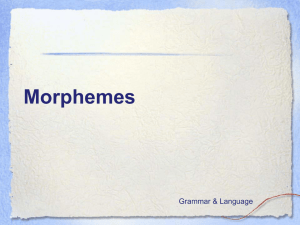Morphology - UCLA Department of Linguistics
advertisement
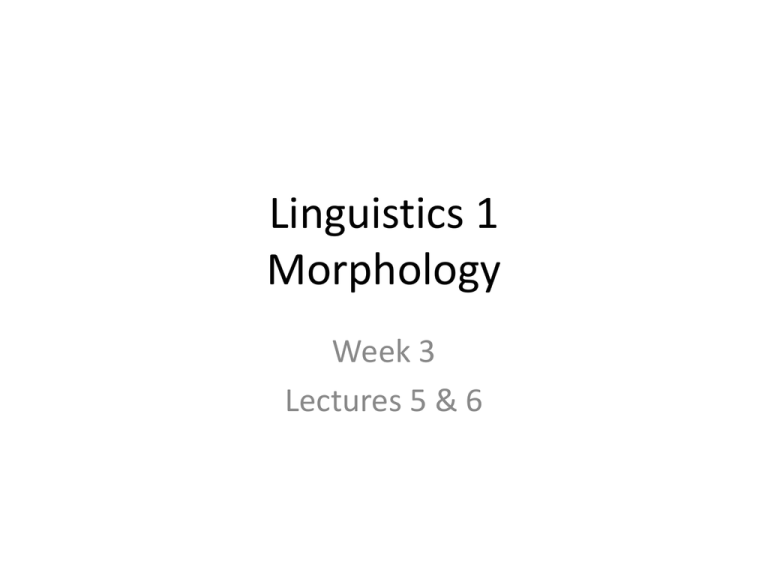
Linguistics 1 Morphology Week 3 Lectures 5 & 6 Topics for Morphology 1. 2. 3. 4. 5. 6. 7. 8. Facts about words: longest, number of known Arbitrary (= non-iconic) relationship of form and meaning Innate principles governing word meaning Classification of morphemes by form Classification of morphemes by function Word formation as rule application Knowledge of combinability and creation of new morphemes Compounds and idioms 2 Words, listemes, and dictionary entries: (1) potato (2) large potato (3) couch potato (4) potatoholic For items (1-4), decide whether … A. B. it is a word and should be in a dictionary. it is a word but should not be in a dictionary. C. it is not a word and should not be in a dictionary. D. it is not a word but should be in a dictionary. E. it’s hard to say. List of topics 3 How many listemes do you know? A. B. C. D. Fewer than 10,000 Several tens of thousands Over 100,000 Over 1,000,000 Use this word number estimator to get an idea of how many words you know: http://www.linguistics.ucla.edu/people/schuh/lx001/Discussion/d03_estimate_word_nu mber.html List of topics 4 What relationship does “spelunk” have to its referent? A. B. C. D. List of topics Arbitrary (non-iconic) Non-arbitrary (iconic) Both I don’t know 5 For each of the Chinese characters (a-f), choose whether the relationship to meaning is… A. arbitrary (non-iconic). B. non-arbitrary (iconic). List of topics 6 A. B. C. Which bird name violates the Whole Object Principle? A. B. C. D. List of topics ash-throated flycatcher sparrowhawk sparrow Both A and B 7 Innate principles governing word meaning: (a-c) all violate one of the principles in A-C. Choose the principle that is violated by each. A. B. C. List of topics The Whole Object Principle The Lexical Contrast Principle The Mutual Exclusivity Principle 8 Which of the following statements is correct? A. B. C. D. E. List of topics English violates the Mutual Exclusivity Principle Cantonese violates the Mutual Exclusivity Principle English violates the Lexical Contrast Principle Cantonese violates the Lexical Contrast Principle Neither language violates either principle 9 What is your your "home" language, basically, the language you grew up speaking with your parents? A. B. C. D. E. F. G. H. I. J. List of topics English Spanish Korean Mandarin Chinese Cantonese Vietnamese Farsi/Persian Tagalog Hindi Other 10 My home language has a lot of inflectional morphology. A. True B. False List of topics 11 My home language has a lot of derivational morphology. A. True B. False List of topics 12 To derive the word meaning ‘teacher’ from ‘teach’, my home language… A. B. C. D. E. List of topics adds a prefix to ‘teach’. adds a suffix to ‘teach’. uses a phrase containing ‘teach’. uses a completely different word. doesn’t do any of the above. 13 English has a word ‘beef’, which means the same thing as ‘cow meat’. My home language expresses this as… A. B. C. D. E. F. List of topics “meat [of] cow”. “cow(’s) meat”. a single word, like ‘beef’. ‘cow’ with a derivational affix attached. none of the above. two or more from (A-D). 14 Bound and free morphemes: Which of the following words contains a bound root? A. B. C. D. List of topics misery misdemeanor misnomer missionary 15 Inflection and Derivation: The underlined words all have a morphological error. The incorrectly used morpheme is… A. B. C. D. E. F. G. H. an inflectional affix a derivational affix: N V a derivational affix: V N a derivational affix: A V a derivational affix: V A a derivational affix: A N a derivational affix: N A a derivational affix that does not change category Answers to all these are given under #5 in http://www.linguistics.ucla.edu/people/sc huh/lx001/Discussion/d03_morphology_k ey.pdf List of topics 16 Which is the correct structure for dishwasher? A. Tree A B. Tree B List of topics 17 Which is the correct structure for remodernizable? A. Tree A B. Tree B List of topics 18 This cartoon seems to illustrate creation of a new derivational suffix. List of topics ① What is the suffix? ② Where did the suffix come from? ③ What meaning does it seem to add to the new word? ④ Make up another example using this suffix. 19 Compounds and Idioms A. B. ① Which cartoon illustrates a compound and which an idiom? ② What do compounds and idioms have in common? ③ What is the major difference between compounds and idioms? List of topics 20 Which structure represents the meaning in the last panel? A. Tree A B. Tree B List of topics 21

